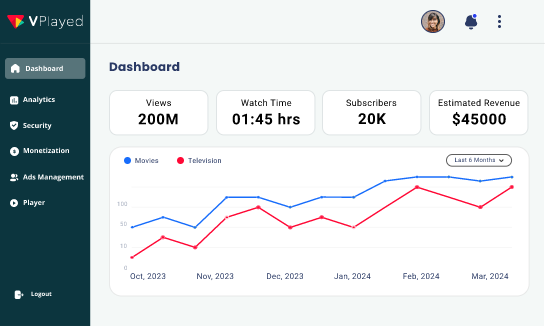Start and Grow Your OTT Streaming Platform With 1000+ Features & 10+ Revenue Models.
Request a Free DemoHow Netflix Make 10x More Money? Netflix Business Model
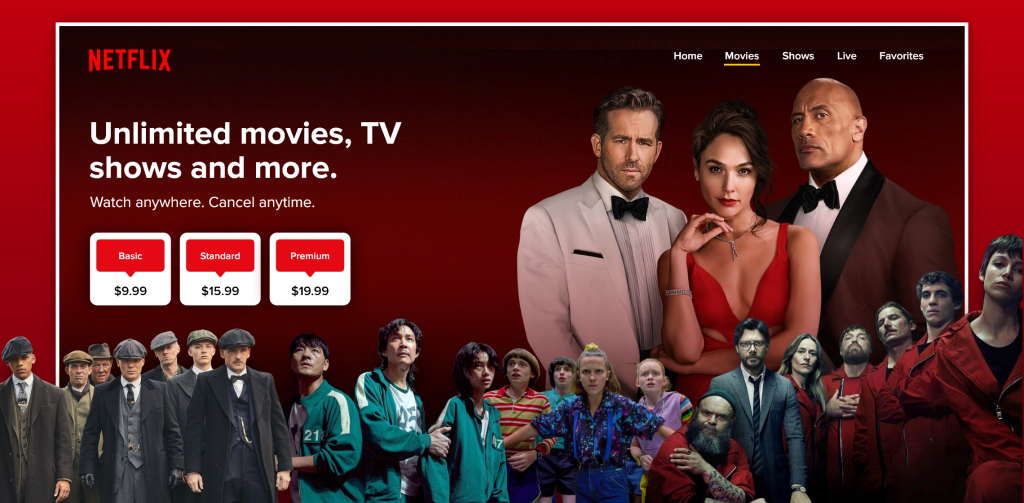
Want to know how Netflix succeeds to be the premium player of the OTT Platform Industry and how does Netflix makes money through various business models and streaming partnerships.
Do you know that Netflix, the world’s largest, most well-known streaming service, has a market capitalization of $252.71 Billion (as of 2024)?
That is almost one-fifth of the size of Alphabet, which is Google’s parent company.
If all 260 million of Netflix’s paying subscribers would come together and make a country, it would be as large as Indonesia.
For context, it is marginally less than the United States’ population (330 million).
Netflix’s revenue for 2023 was $33.7 billion. For context, it is almost equal to General Motors market capitalization.
Clearly, Netflix is huge. But, how did it get so big?
How does Netflix make money or rather so much money?
What is Netlfix’s business mode?
How to build an OTT platform like Netflix?
We will learn all of it in the next few minutes.
But, let’s start with the most basic question.
- Fully Customizable
- Lifetime Ownership
- On-Premise/On-Cloud
- 100% White-label
- Zero Revenue Share
- Hire Developers
Table of Contents
What is Netflix?

Netflix is a subscription-based video-on-demand OTT streaming service. It has a wide variety of content like TV shows, movies, documentaries, and other original content.
Netflix was founded in 1997 by two Americans named, Reed Hastings and Marc Randolph as a DVD-by-mail service. But, ironically and quite surprisingly Netflix has come a long way in the last two decades.
It has digressed from its original business model of selling DVDs and it is currently one of the most popular streaming services in the world.
The fact that Netflix has 260 million paying subscribers from 190+ countries across the world speaks volumes about the enormity of the streaming service.

How Netflix Works?
Netflix works like a big digital library with movies and TV shows that you can access via the internet. Let’s see how exactly Netflix works in simple terms, without any jargon.
First, you install the app and sign up for a subscription. You can choose from a variety of subscription plans, including a basic plan that costs $8.99 per month, a standard plan for $13.99 per month, and a premium plan costing $17.99 per month.
Subscription to a plan gives you access to all of their content library.
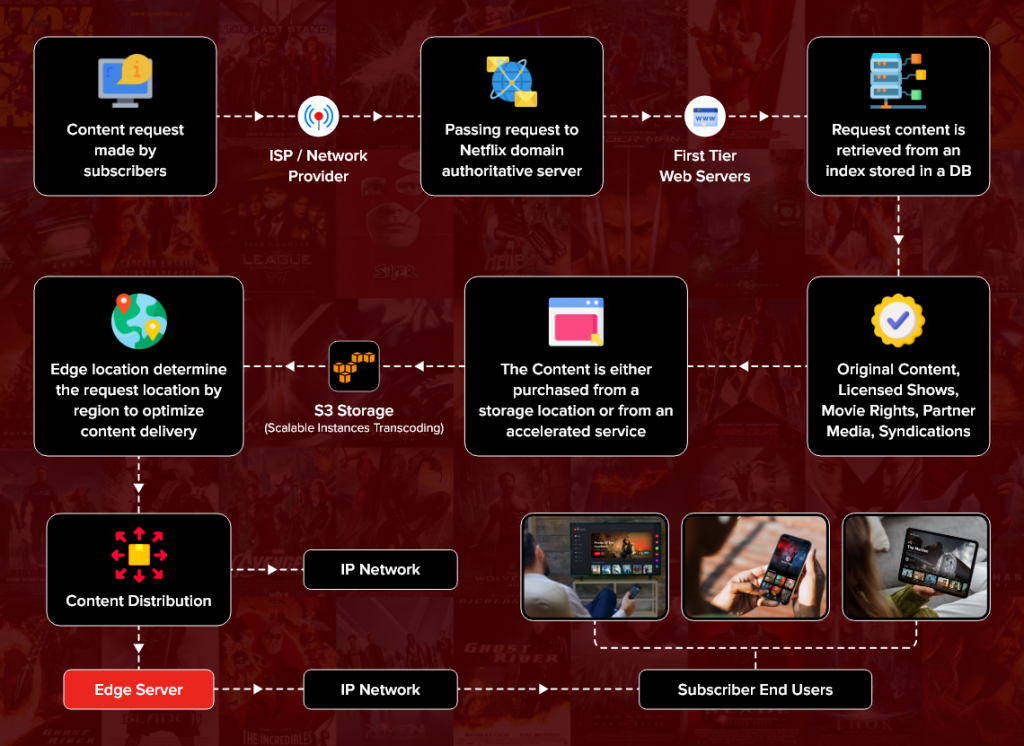
Once subscribed, you can use any internet-connected device, like a computer, smartphone, or smart TV, to log in to your Netflix account.
When you’re in, you can browse through their catalog, search for specific titles, or explore recommendations based on your viewing history.
And whenever you find something interesting to watch, you simply have to click either the play button to play it instantly or the download button to download and watch it later.
According to Netflix, the average Netflix user has rated roughly 200 movies, with about 4 million fresh ratings added each day.
Source: Howstuffworks
How Does Netflix Make Money?
Netflix makes money from the following sources: subscriptions, important partnerships, and ad revenue.
The Netflix subscription comprises three plans – standard with ads (1080p), standard without ads (1080p), and premium (4K+HDR).
After paying for the subscription, the subscribers gain access to films, exclusive shows, and other Netflix originals (which are usually for one month).

A substantial portion of Netflix’s revenue comes from a single source — subscriptions.
Almost 90% of all Netflix’srevenue ($35 billion in 2023) comes from subscriptions and strategic partnerships, while approximately 10% of it comes from advertising.
As of 2024, Netflix has three subscription plans — Standard with ads ($6.99), Standard ($15.49), and Premium ($22.99) in the United States. Here’s a clear breakdown of Netflix’s subscription plans.
| Plan | Standard with ads (1080p) | Standard 1080p | Premium 4K + HDR |
| Monthly price | $6.99 | $15.49 | $22.99 |
| Video and sound quality | Good | Good | Best |
| Resolution | 1080p (Full HD) | 1080p (Full HD) | 4K (Ultra HD) + HDR |
| Spatial audio (immersive sound) | Not included | Not included | Included |
| Supported devices | TV, computer, mobile phone, tablet | TV, computer, mobile phone, tablet | TV, computer, mobile phone, tablet |
| Devices your household can watch at the same time | 2 | 2 | 4 |
| Download devices | 2 | 2 | 6 |
| Ads | A few ad breaks | No ads | No ads |
How Much Money Does Netflix Make?
As seen above, Netflix made $33.72 Billion in revenue for FY 2023 alone. This is almost a 6.7% Y-o-Y increase from what it made in the previous financial year.
In FY 2022, the streaming giant made $31.61 Billion in revenue.
Netflix’s profit for FY 2023 stood at $5.4 Billion. This is nearly $1 Billion more than what it made ($4.5 Billion) in 2022.
What is Netflix’s Business Model?
It can be said that Netflix follows a subscription-based business model as nearly 90% of its total revenue comes from subscriptions. But, subscriptions aren’t the only way through which Netflix makes money.
Apart from subscription revenue, Netflix earns money from strategic partnerships with companies and networks across the world by various interesting means.
Let’s see them here.
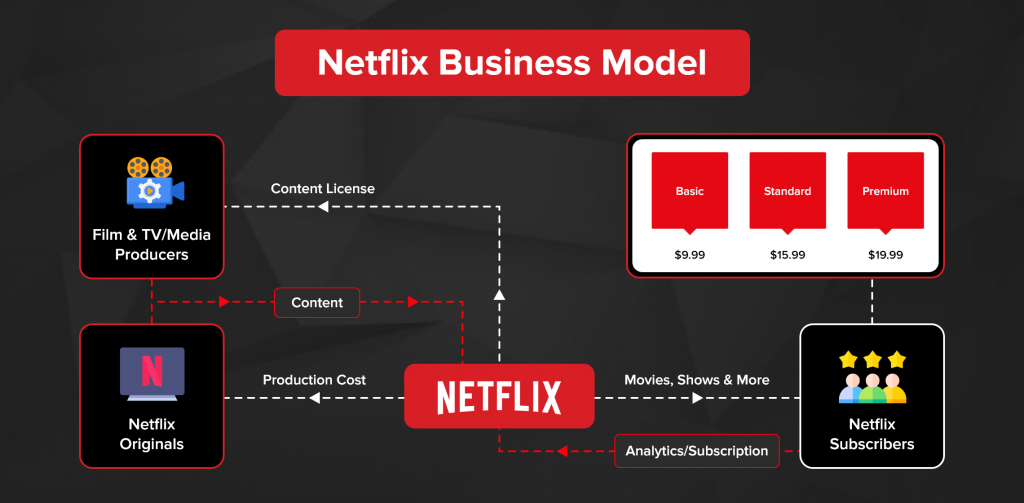
1. Distribution Partnerships:
Netflix has a pretty diverse business model. It earns income through multiple sources. For instance, Netflix often partners with telecom companies, cable providers, and other media distributors.
These companies give the Netflix app pre-installed as part of their bundled packages or add-on subscriptions. More often than not, these partnerships involve revenue-sharing agreements.
As a result, Netflix receives a portion of the subscription fees paid by customers who access its services through these distribution channels.
2. Device Partnerships:
From time to time, Netflix enters into collaboration with OEMs like Samsung, and LG. This is to ensure that its app is pre-installed or readily available on their platforms.
In some instances, Netflix may also enter into revenue-sharing agreements with device partners. This way it makes a percentage of sales or subscription revenue generated through their devices.
3. Content Partnerships:
Netflix is also known to engage in co-production or licensing agreements with other media companies, production studios, or content creators.
You may wonder, why?
But, it is agreements like these that help the company acquire/produce exclusive content for its audience. Of course, these partnerships often involve revenue-sharing arrangements.
Over here, Netflix pays a licensing fee or even shares a percentage of subscription revenue with its content partners.
4. Marketing Partnerships:
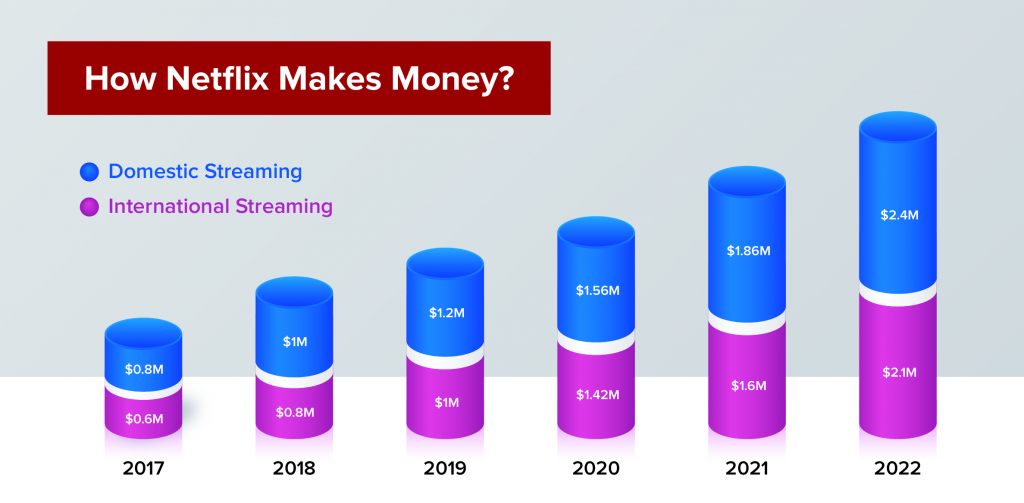
Netflix forms strategic marketing partnerships with other brands to promote its original content, special events, or subscription offers.
These partnerships typically include co-branded marketing campaigns, sponsored content, or cross-promotional activities.
They allow Netflix to expand its reach and attract new subscribers.
5. International Expansion:
In regions where Netflix is expanding its presence, the company may forge partnerships with local media companies, broadcasters, or streaming platforms.
This is to navigate regulatory challenges, access local content, or leverage established distribution networks of the ever-evolving local talent pool.
These partnerships may involve revenue-sharing agreements or joint ventures to penetrate new markets easily.
In all, strategic partnerships and tie-ups play a vital role in Netflix’s revenue strategy.
They allow the company to increase its distribution reach, acquire compelling content, drive subscriber growth, and maximize monetization opportunities across multiple markets and platforms.
Looking To Build Your Own OTT Video Platform?
Start and Grow Your Video Streaming Service With 1000+ Features & 9+ Revenue Models.
 Highly Customizable
Highly Customizable Life Time Ownership
Life Time Ownership Own 100% of Your Revenue
Own 100% of Your Revenue
 Full-Branding Freedom
Full-Branding Freedom
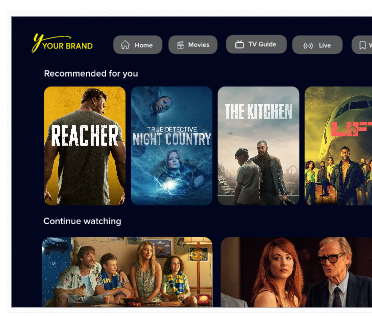
What Does it Cost To Run Netflix?
Data says it cost $25.98 billion to run Netflix in 2022 — that is the operating expense of the streaming service.
As high as it may sound, Netflix can actually afford to spend so much on its operations as its gross revenue stands at $33.7 billion in 2023.
We all know that Netflix makes a lot of money from streaming. But it’s important to understand how they earn it and what expenses they have.
It’s an open secret that Netflix earns a substantial portion of its income from subscriptions (more than 90% comes directly from paying subscribers).
Let’s understand where exactly Netflix spends all its revenue.
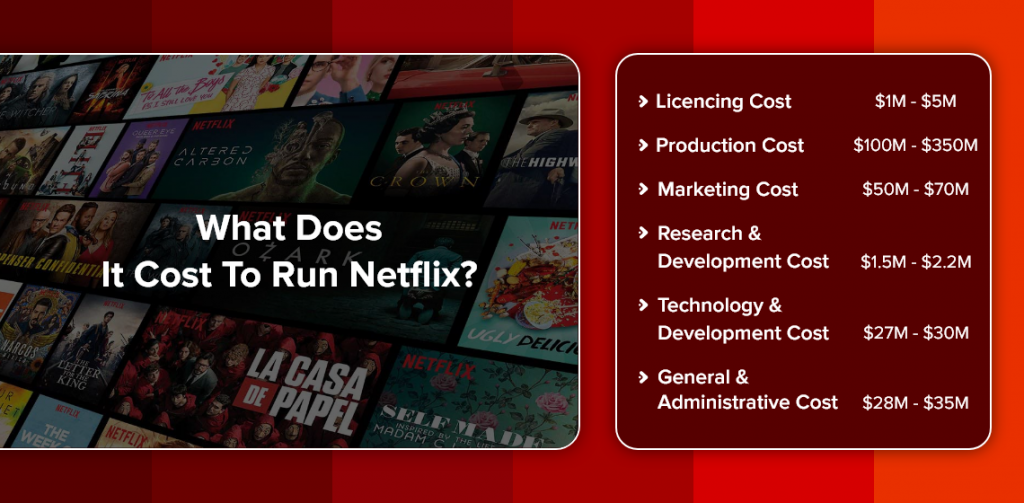
- Licensing Cost (Content Acquisition)
One part of the expense is paying for licenses to show films and TV shows that Netflix buys from other creators. They have to legally buy the rights to stream the content they want to watch. This cost can vary based on the popularity of the content.
- Production Cost
To cut down on licensing costs, Netflix started making originals — its own shows, films, and documentaries back in 2013.
Without a doubt, producing its own content costs Netflix a huge sum. However, it helps them cut licensing costs in the longer run (as licensing costs are recurring in nature).
- Marketing Cost
Marketing expense forms a considerable portion of Netflix’s total revenue expenditure (although we are not sure about the exact breakdown).
Netflix is after all a streaming service. It needs to advertise, run marketing campaigns to attract new users and compete with other streaming platforms (given the fierce competition from the likes of Disney+, Amazon Prime Video, Hulu, etc.).
The marketing cost of Netflix typically includes paying for ads, partnerships with other companies, and offering free trials to new subscribers (yes, it is also taken as a marketing expense).
All of these costs add up and impact how much money Netflix makes in the end.
- Research And Development Cost
Netflix pumps so much money into research and development (R&D) every year.
You see, the streaming industry is fiercely competitive. Investing in R&D helps Netflix to stay relevant — stay close to user preferences, like enhancing its offerings and giving more accurate, personalized suggestions for users.
Have you ever wondered why Netflix always has near-zero stutters and super-fast loading times? It is the direct implication of what investing in R&D can do to the overall user experience.
Additionally, R&D investment allows Netflix to — produce fresh, original content like Peaky Blinders, and Life on our Planet, maintain a likable, responsive user interface design, and improve accessibility features like audio captions and so on.
It is this investment that has helped Netflix grow and stay ahead of the curve for more than two decades.
- Technology and Development Costs
These kinds of costs mostly include maintaining and improving streaming delivery systems and developing and updating apps for various devices.
More importantly, it includes the cost of expanding the infrastructure to support the ever-growing user demand (imagine tens of millions of users opening the OTT TV app at the same time).
Plus, Netflix includes researching and implementing new technologies to enhance the streaming experience, like say, a higher video quality, better compression algorithms, and improved playback reliability.
So, it’s a fairly expensive yet hard-to-overlook zone for Netflix.

- General Administrative Costs
Finally, we have the general administrative costs of running Netflix. Remember, Netflix is a massive global streaming service. It covers expenses for employees and other investments related to running the company smoothly.
So, general administrative costs include everything from paying salaries to administrative staff to collaborating with other companies.
It may sound too much for you, but all of these costs are a necessity. They are kind of non-negotiable for Netflix to operate effectively and outcompete rivals.
Conclusion
We hope you found an answer to the question, “How does Netflix make money?” as we come to the conclusion of this blog.
In a nutshell, Netflix has a fairly diversified business model, although 90% of its revenue comes from just a single source — subscriptions.
And, if you’re a content owner or aggregator, looking to build your own Netflix-like video streaming platform then there’s no better place on the internet than VPlayed.
VPlayed offers a 100% customizable Netflix-like white label OTT platform for streaming. What’s so special about VPlayed?
While most OTT platforms in the market have monthly recurring payments or user charges, VPlayed only has a one-time licensing fee. It means the platform has no recurring payments and zero revenue sharing so you can keep all the money you monetized with you.
And, above VPlayed is one of the very few, possibly the only platform that gives source code access.
With a team of over 300 certified OTT app developers, we’ve successfully launched more than 200 white-label streaming apps. Our clientele spans 40+ countries, 5+ continents, and across 10 different time zones.
Reach out to our team today and launch your Netflix-like OTT solution in 4 days or less.
- Request Demo Book a Live, Personalized Demo
- Contact Sales Reach Out to Our OTT Experts
Frequently Asked Questions(FAQ)
Netflix is all about a video-on-demand service that lets members watch whatever they like such as TV episodes, movies, documentaries, and other content on a variety of Internet-enabled devices. The company also offers DVD rental options, in which it provides episodes and films on DVDs. When we learn about how Netflix makes money, we come to know about this extraordinary video-on-demand service that is built on a subscription-based concept, where users gain access with a monthly fee.
Rather than collecting income from a single title, Netflix started their business with the strategy that’s subscription-based. As a result, what we notice indicates that the content assets, both licensed and generated, are examined in aggregate at the operating segment level. This online streaming service has its own app and may be accessed from a variety of other connected devices.
Considering the cumulative growth of Netflix, a few figurative estimates right from 2019 to 2021 will let us know how they make money. In the year 2019, annual growth revenue is estimated at around $20.156B from 2018. Later in 2020, there seems to have a slight increase, gaining $24.996B from 2019. After that, service providers witnessed a sharp revenue rise of $29.698B in comparison to the preceding year.
Netflix, without a doubt, has a high-cost structure. Predominantly, the firm had to invest heavily at the start of its present business model in order to achieve the type of video collection it wanted to provide its clients. So Netflix hasn’t always been able to swing high with money-making ventures. However, it does now. What surprises businesses imply that Netflix has managed to upkeep its profit zone of over a billion dollars in 2018, a 116 % increase over the previous year’s earnings.
In the upcoming weeks, Netflix has analyzed people having plentiful entertainment choices & which creates room for how well they can earn maximum revenue. They have planned to upscale money by offering new OTT features that are flexible for subscribers in countries like Chile, Costa Rica, Peru. Two members added with sub-accounts for a monthly fee will be the key takeaway.
If you are also trying to launch a Netflix-like OTT app and establish yourself as the leading provider of binge-watching content to attract millions, you can get an independent streaming solution! Nothing less than having lifetime ownership with the white labeling feature from VPlayed could help you to scale up in the line of OTT. Other than that, perks like security protocols, marketing solutions, will potentialize further.
